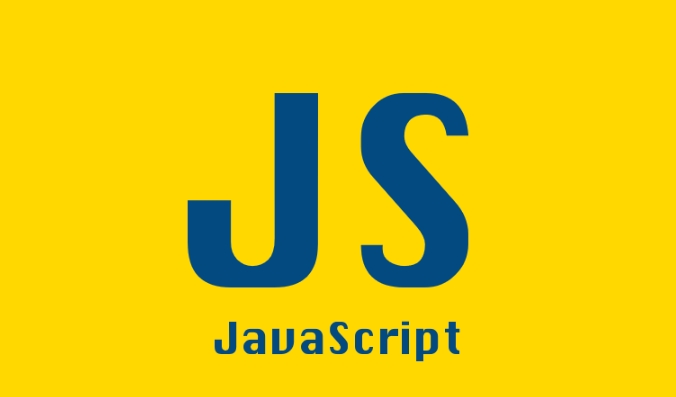How to use the match() method with regular expressions in JS?
Aug 01, 2025 am 06:15 AMThe match() method of strings in JavaScript is very powerful to extract information through regular expressions. When using it, you need to pass a regular expression as a parameter. For example, str.match(/ain/g) will return all result arrays that match "ain"; if the g flag is not set, the first match and additional information will be returned. Common considerations include: 1. Test regular expressions to ensure correctness; 2. Use slashes to wrap the regularity correctly and pay attention to special character escapes; 3. Handle null when there is no match; 4. Capture groups can extract specific parts through brackets, such as email.match(/(\w )@(\w .\w )/) to obtain username and domain names respectively; 5. Modern JS supports naming capture groups, such as dateStr.match(/(?

When working with strings in JavaScript, the match() method is a powerful tool for extracting information using regular expressions. It allows you to search a string for a pattern and returns matches in an array format — or null if no match is found.

Basic Usage of match() with Regex
To use match() effectively, pass a regular expression as the argument. Here's a simple example:
const str = "The rain in Spain falls mainly in the plain"; const result = str.match(/ain/g); console.log(result); // ["ain", "ain", "ain"]
In this case, we're searching for all occurrences of "ain" in the string using the global flag g . Without the g flag, match() will return only the first match along with additional information like index and input string.

If you forget to include the regex flags properly, you might not get the results you expect. So always double-check whether you need flags like g (global), i (case-insensitive), or m (multiline).
Common Pitfalls and Tips
- Always test your regex : Use online tools like regex101.com or browser dev tools to verify your patterns before using them in production.
- Don't forget the slashes : Regular expressions in JavaScript are enclosed in forward slashes
/pattern/flags. - Handle null returns : If there's no match,
match()returnsnull, so make sure to check for that before trying to access array methods on the result.
Here are a few common gotchas:

- Forgetting to escape special characters (like
.,*, - Using string methods incorrectly with regex patterns
- Not considering case sensitivity without the
iflag
Extracting Groups from Matches
One of the more advanced uses of match() is capturing groups inside parentses. When you use capture groups in your regex, match() returns an array where the first element is the full match, followed by the captured groups.
For example:
const email = "Contact us at support@example.com"; const pattern = /(\w )@(\w \.\w )/; const result = email.match(pattern); console.log(result[0]); // "support@example.com" console.log(result[1]); // "support" console.log(result[2]); // "example.com"
This becomes especially useful when parsing structured data like URLs, emails, or log lines where you want to extract specific parts.
Keep in mind: if your regex includes multiple capture groups, they'll appear in order in the returned array. Also, named capture groups (available in modern JS) can make things even clearer:
const dateStr = "Today is 2024-04-05";
const result = dateStr.match(/(?<year>\d{4})-(?<month>\d{2})-(?<day>\d{2})/);
console.log(result.groups.year); // "2024"
console.log(result.groups.month); // "04"
console.log(result.groups.day); // "05"This way, you don't have to count array indexes to get the values you need.
Final Notes
Using match() with regular expressions give you fine-grained control over text processing in JavaScript. Whether you're doing basic searches or extracting structured data with capture groups, it's a core skill worth mastering.
You should also remember that match() isn't the only regex-related method in JS — there's also test() , exec() , and replace() , each with their own use cases.
Basically that's it.
The above is the detailed content of How to use the match() method with regular expressions in JS?. For more information, please follow other related articles on the PHP Chinese website!

Hot AI Tools

Undress AI Tool
Undress images for free

Undresser.AI Undress
AI-powered app for creating realistic nude photos

AI Clothes Remover
Online AI tool for removing clothes from photos.

Clothoff.io
AI clothes remover

Video Face Swap
Swap faces in any video effortlessly with our completely free AI face swap tool!

Hot Article

Hot Tools

Notepad++7.3.1
Easy-to-use and free code editor

SublimeText3 Chinese version
Chinese version, very easy to use

Zend Studio 13.0.1
Powerful PHP integrated development environment

Dreamweaver CS6
Visual web development tools

SublimeText3 Mac version
God-level code editing software (SublimeText3)

Hot Topics
 How does garbage collection work in JavaScript?
Jul 04, 2025 am 12:42 AM
How does garbage collection work in JavaScript?
Jul 04, 2025 am 12:42 AM
JavaScript's garbage collection mechanism automatically manages memory through a tag-clearing algorithm to reduce the risk of memory leakage. The engine traverses and marks the active object from the root object, and unmarked is treated as garbage and cleared. For example, when the object is no longer referenced (such as setting the variable to null), it will be released in the next round of recycling. Common causes of memory leaks include: ① Uncleared timers or event listeners; ② References to external variables in closures; ③ Global variables continue to hold a large amount of data. The V8 engine optimizes recycling efficiency through strategies such as generational recycling, incremental marking, parallel/concurrent recycling, and reduces the main thread blocking time. During development, unnecessary global references should be avoided and object associations should be promptly decorated to improve performance and stability.
 How to make an HTTP request in Node.js?
Jul 13, 2025 am 02:18 AM
How to make an HTTP request in Node.js?
Jul 13, 2025 am 02:18 AM
There are three common ways to initiate HTTP requests in Node.js: use built-in modules, axios, and node-fetch. 1. Use the built-in http/https module without dependencies, which is suitable for basic scenarios, but requires manual processing of data stitching and error monitoring, such as using https.get() to obtain data or send POST requests through .write(); 2.axios is a third-party library based on Promise. It has concise syntax and powerful functions, supports async/await, automatic JSON conversion, interceptor, etc. It is recommended to simplify asynchronous request operations; 3.node-fetch provides a style similar to browser fetch, based on Promise and simple syntax
 JavaScript Data Types: Primitive vs Reference
Jul 13, 2025 am 02:43 AM
JavaScript Data Types: Primitive vs Reference
Jul 13, 2025 am 02:43 AM
JavaScript data types are divided into primitive types and reference types. Primitive types include string, number, boolean, null, undefined, and symbol. The values are immutable and copies are copied when assigning values, so they do not affect each other; reference types such as objects, arrays and functions store memory addresses, and variables pointing to the same object will affect each other. Typeof and instanceof can be used to determine types, but pay attention to the historical issues of typeofnull. Understanding these two types of differences can help write more stable and reliable code.
 JavaScript time object, someone builds an eactexe, faster website on Google Chrome, etc.
Jul 08, 2025 pm 02:27 PM
JavaScript time object, someone builds an eactexe, faster website on Google Chrome, etc.
Jul 08, 2025 pm 02:27 PM
Hello, JavaScript developers! Welcome to this week's JavaScript news! This week we will focus on: Oracle's trademark dispute with Deno, new JavaScript time objects are supported by browsers, Google Chrome updates, and some powerful developer tools. Let's get started! Oracle's trademark dispute with Deno Oracle's attempt to register a "JavaScript" trademark has caused controversy. Ryan Dahl, the creator of Node.js and Deno, has filed a petition to cancel the trademark, and he believes that JavaScript is an open standard and should not be used by Oracle
 React vs Angular vs Vue: which js framework is best?
Jul 05, 2025 am 02:24 AM
React vs Angular vs Vue: which js framework is best?
Jul 05, 2025 am 02:24 AM
Which JavaScript framework is the best choice? The answer is to choose the most suitable one according to your needs. 1.React is flexible and free, suitable for medium and large projects that require high customization and team architecture capabilities; 2. Angular provides complete solutions, suitable for enterprise-level applications and long-term maintenance; 3. Vue is easy to use, suitable for small and medium-sized projects or rapid development. In addition, whether there is an existing technology stack, team size, project life cycle and whether SSR is needed are also important factors in choosing a framework. In short, there is no absolutely the best framework, the best choice is the one that suits your needs.
 Understanding Immediately Invoked Function Expressions (IIFE) in JavaScript
Jul 04, 2025 am 02:42 AM
Understanding Immediately Invoked Function Expressions (IIFE) in JavaScript
Jul 04, 2025 am 02:42 AM
IIFE (ImmediatelyInvokedFunctionExpression) is a function expression executed immediately after definition, used to isolate variables and avoid contaminating global scope. It is called by wrapping the function in parentheses to make it an expression and a pair of brackets immediately followed by it, such as (function(){/code/})();. Its core uses include: 1. Avoid variable conflicts and prevent duplication of naming between multiple scripts; 2. Create a private scope to make the internal variables invisible; 3. Modular code to facilitate initialization without exposing too many variables. Common writing methods include versions passed with parameters and versions of ES6 arrow function, but note that expressions and ties must be used.
 What is the cache API and how is it used with Service Workers?
Jul 08, 2025 am 02:43 AM
What is the cache API and how is it used with Service Workers?
Jul 08, 2025 am 02:43 AM
CacheAPI is a tool provided by the browser to cache network requests, which is often used in conjunction with ServiceWorker to improve website performance and offline experience. 1. It allows developers to manually store resources such as scripts, style sheets, pictures, etc.; 2. It can match cache responses according to requests; 3. It supports deleting specific caches or clearing the entire cache; 4. It can implement cache priority or network priority strategies through ServiceWorker listening to fetch events; 5. It is often used for offline support, speed up repeated access speed, preloading key resources and background update content; 6. When using it, you need to pay attention to cache version control, storage restrictions and the difference from HTTP caching mechanism.
 Handling Promises: Chaining, Error Handling, and Promise Combinators in JavaScript
Jul 08, 2025 am 02:40 AM
Handling Promises: Chaining, Error Handling, and Promise Combinators in JavaScript
Jul 08, 2025 am 02:40 AM
Promise is the core mechanism for handling asynchronous operations in JavaScript. Understanding chain calls, error handling and combiners is the key to mastering their applications. 1. The chain call returns a new Promise through .then() to realize asynchronous process concatenation. Each .then() receives the previous result and can return a value or a Promise; 2. Error handling should use .catch() to catch exceptions to avoid silent failures, and can return the default value in catch to continue the process; 3. Combinators such as Promise.all() (successfully successful only after all success), Promise.race() (the first completion is returned) and Promise.allSettled() (waiting for all completions)






